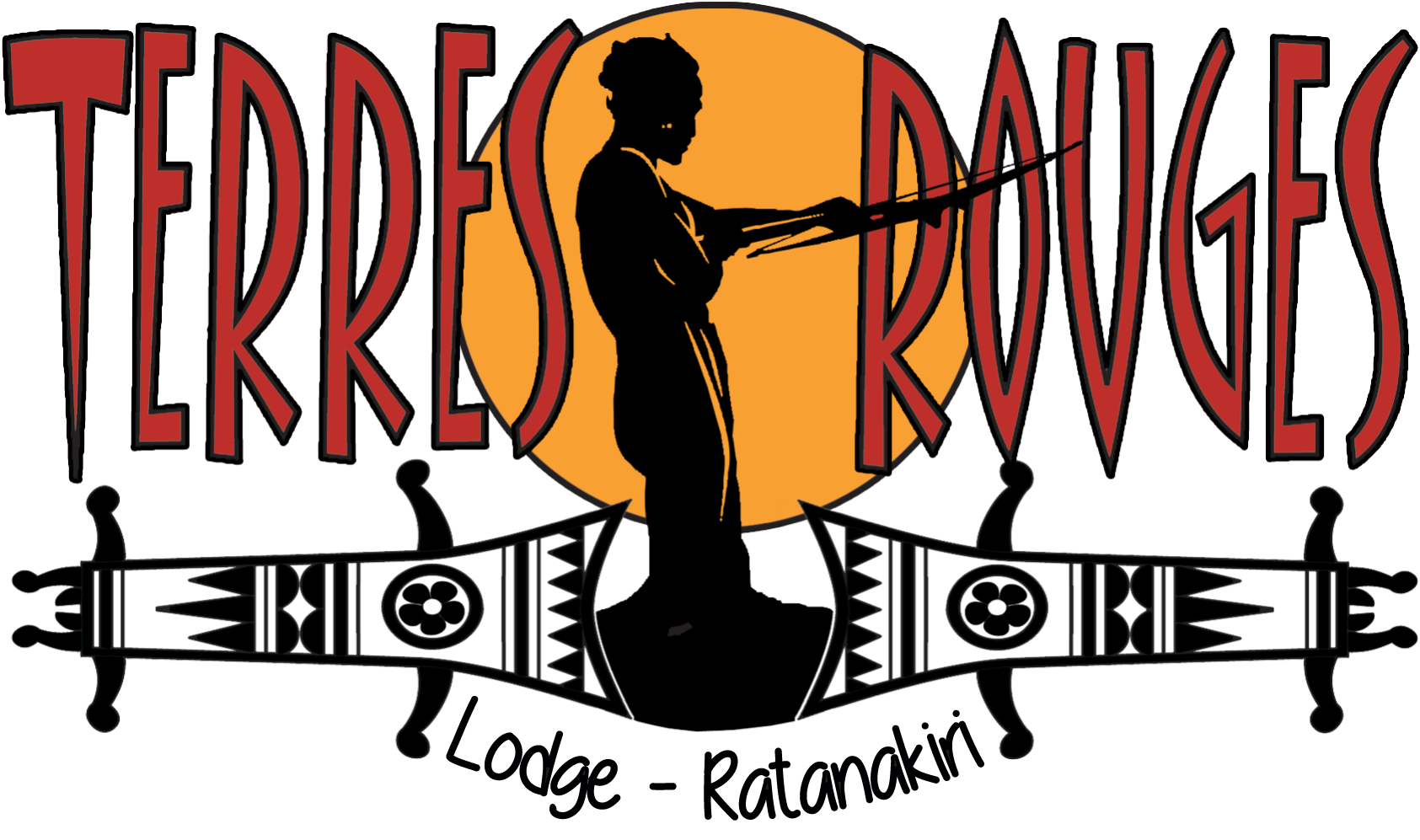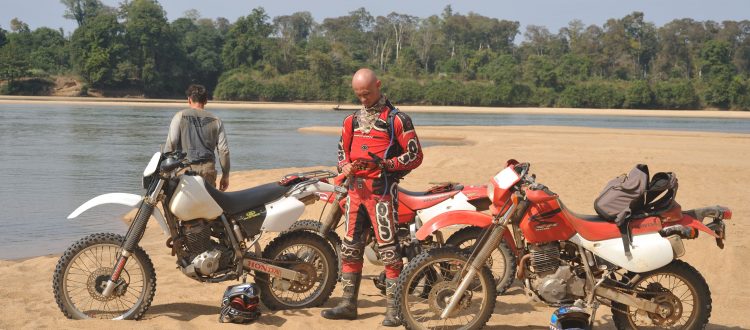Revue de presse – Sarika
Rollin’on through Rattanakiri.
“Get your motor runnin’
Head out on the highway (sort of)
Lookin’ for adventure
And whatever comes your way.”
These lyrics from Steppenwolf’s “Born to be Wild” hit single kept running through my mind as I set out, earlier this year, on an adventure tour with a group of journalists through Ratanakiri Province, in northeastern Cambodia. These, plus the lyrics of Peter Gabriel’s “Red, Red Rain”, except I’d changed them to “Red, Red Road”, because that’s what you see a lot in northeastern Cambodia : red, red, dirt roads.
The three-day tour was an awakening of sorts for many on the trip, who had never seen this side of Cambodia. When I heard we’d be visiting hill tribes, I thought I would be seeing people dressed in quaint traditional costumes such as those worn by the Akha in northern Thailand. This was not to be the case. These were Cambodian hill tribes, people who lived off the land but who dressed more like Westerners than any hilltribe I knew. They didn’t try to sell us anything, or hassle us at all. Indeed, we seemed more like a cultural anomaly to them than they did to us.
We departed Phnom Penh for Banlung, the capital of Ratanakiri, on a President Airlines flight. (The old provincial capital of Lumphat was destroyed by US bombing during the Vietnam War.) After arriving, we checked in at the Terres Rouges Lodge, formerly the governor’s mansion. This luxurious lodge is the closest thing to a hill station in Ratanakiri, and the name, “Red Earth Lodge” in French, is entirely à propos. The food is excellent, the service and the accommodation are good. There’s even a TV and DVD player, with some of the best Hollywood films on the Vietnam War (Full Metal Jacket, Apocalypse Now, Platoon, etc.) on offer.
On our first expedition, we traveled north, in the direction of Laos, passing the volcanic rocks of Veyrum Plang, a lava field in a forest with a small waterfall and “tiger cave” nearby. We continued on to the village of Taveng, crossing through various types of landscapes: primary forest, clear forest, bamboo forest and “African Bush”.
We stopped at a few Kroeung villages along the way. The Kroeung have a custom of erecting bachelor houses standing on long bamboo poles.
Pierre-Yves Clais, the proprietor of Terres Rouges Lodge explains the custom: “These tall houses on stilts are built by the young men themselves when they feel they are ready to marry. The boys, about 15-18 years old, usually help each other to make these houses, which only last one season –they’re usually destroyed before windy February –leaving just enough time for their owner to find the right Cinderella. They show their skills by building a nice and tall house and their courage by living in it (it can become scary when the weather gets windy). Their house then becomes a kind of CV or business card, if you like.
As for the small houses, they are built by the father of the young girl after she tells him that her own quest is about to begin. It’s generally built facing the family house. The girl is then free to welcome whoever in her house at night time. The only taboo is that she mustn’t become pregnant. If that happens… well, a few pigs get slaughtered, and the culprit (or supposed culprit) will have to marry the girl.”
The next day we visited some Tampoun villages, where we saw a nuber of women weaving some beautiful fabric. Again, no hard-sell tactics were employed on us. We then moved on to a gem mine near the town of Bokeo. The itinerant labour camp set up there reminded me of something out of Steinbeck’s Grapes of Wrath. Gem mining is a dangerous way to make a living, and the long thin mine strips can be a death trap if a miner takes stumble. But the casual banter and interaction we observed among the group made me believe the majority –especially those not climbing down the shafts- seemed happy to be working outdoors. Close to 120 miners troll for amethyst and zircon at this site, selling their finds to Taiwanese traders. Next, we embarked in two dugouts canoes on a trip up the Se San River to visit a Jaraï village. On the way, I couldn’t help but envision Marlon Brando in full war paint looking down upon us, or Dennis Hopper jumping up and down on the riverbank, yelling “He’s a genius; he’s a genius!” As I played in my head with these scenes from Apocalypse Now, our boatman artfully navigated the Se San, presenting us with some of the nicest scenery in Southeast Asia.
When we finally got to the Jarai village, we were greeted by a number of primitive wooden totem-poles. These weren’t the colourfully elaborated totems you find in the Canadian Northwest, and they seemed very out of place, situated there, in the middle of the jungle, miles from any significant habitation. Nevertheless, they were striking. One depicted a pregnant woman, another a foot soldier with his gun, yet another was a kind of totem shrine to a former helicopter pilot. Their purpose was to protect the spirits of the dead and to achieve prosperity in the afterlife.
Adventure Cambodia describes Ratanakiri as “the home of Cambodia’s version of the Golden Triangle”. Unlike the other one of illicit drug fame, this triangle is gaining popularity by for its natural beauty and its self-sufficient hill tribes and not a part of the tourism industry as they are in neighbouring Thaïland.”
Yeak Lom Volcanic Lake is one area that neatly fits this description. We visited Yeak Lom on our last day, just before departing for Phnom Penh. Lying surrounded by rainforest just outside Banlung, it’s 700 000 old. The lake is sacred to the indigenous Khmer Loeu, and makes a great place for a daytrip, picnic or simple walk in the woods. With help from the United Nations Development Program (UNDP) and Canada’s International Development and Research Centre (IDRC), the 5,000 hectare area has been designated a protected zone.
A Culture and Environment Centre details the history of the area and the folklore of the local hill peoples, while a small on-site kiosk sells crafts, instruments and clothes by the Khmer Loeu.
A nature trails runs the crater’s rim. On a walkabout, you can see the remnants of a chalet that once belonged to Prince Sihanouk. The area also serves as a model for national resource and conservation, trained rangers patrol regularly and educates visitors on the perils of polluting the natural environment.
Ratanakiri has earned its reputation as the dust capital of Cambodia, and adventure tours in the region are tough going, there’s no doubt about it.
But if you make it to northeastern Cambodia and go on one of these treks, you’re bound to have an experience that you are not likely to forget. The natural sights are stupendous, while the people are kind and gentle, and won’t hassle you the way they do so in so many areas that have become both geared and jaded by tourists.
By Scott Murray, Sarika, October 2005

